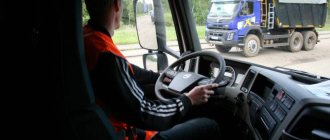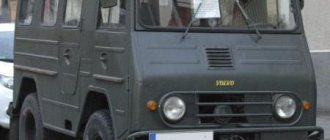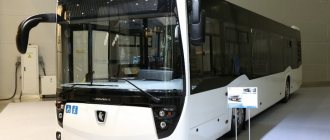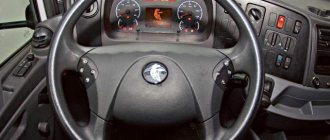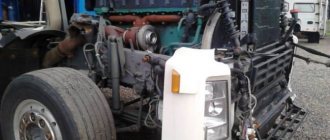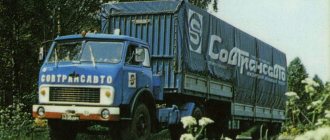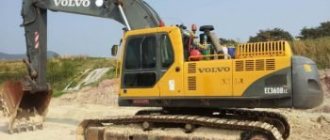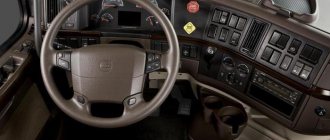The origins of these unique SUVs go back to the middle of the last century, when the Swedish automaker Volvo received an order to develop and produce powerful military utility vehicles that can easily overcome off-road conditions. In 1959, under the L230 marking, the first prototypes of military SUVs rolled off the Volvo assembly line. The design of the car used parts and components borrowed from another Volvo model - Amazon. Among other things, the SUV was equipped with a 1.6-liter B 16 petrol engine, previously installed on Amazon.
The car was named Laplander (Laplander), which, as you might guess, echoes the name of the people living in the countries of Northern Europe and engaged in hunting and reindeer herding.
After establishing mass production, the SUV began to be supplied to units of the Swedish army, but soon the military of other NATO countries began to show interest in it. The popularity of the “Laplanders” grew, and in the mid-60s, Swedish SUVs joined the fleet of UN peacekeeping forces.
Laplander was produced in several versions - cargo, medical, anti-tank, passenger - intended for transporting military personnel.
During operation in extreme conditions, design flaws were also revealed, the most significant of which was low stability due to the high center of gravity. The designers of the Swedish concern gradually refined and modernized their all-terrain vehicle, as a result of which in the early 70s of the last century the Laplander C303 model was introduced, which added more power and dimensions in comparison with its predecessor.
Design features of Volvo Laplander c303
The uniqueness of this model is associated not only and not so much with its unusual appearance, but also with its outstanding driving performance, providing real high cross-country ability in off-road conditions. This was achieved thanks to the carriage layout of the body, mounted on a durable ladder-type frame and portal bridges, which became a kind of calling card of the “Laplander”.
At first glance, portal bridges are not the best achievement of design thought. Their use leads to a decrease in speed, deterioration of dynamic performance, and controllability . However, it is thanks to the portal bridges that the all-terrain vehicle receives the much-needed high ground clearance, which for the Laplander is 380 mm, which is 10 cm higher than the UAZ ground clearance on military bridges. Thus, the design of bridges with axles offset relative to each other and final drives significantly increased the cross-country ability of the “Laplander”. The absence of overhangs, pneumatic and center locks complete the picture, allowing the Laplander to carry the status of an all-terrain vehicle without any reservations.
Step-by-step instructions for DIY assembly
Before starting assembly, drawings of the machine frame should be developed. The documentation indicates attachment points to the body and places for installing suspension spring brackets. On wheeled vehicles, the steering mechanism is mounted on the frame, and a cardan shaft is used to connect to the column. To build an all-terrain vehicle, you will need a channel and additional units from vehicles with an all-wheel drive system (for example, a transfer gearbox and drive axles).
All-terrain vehicle on wheels
A brief algorithm for building a wheeled all-terrain vehicle:
- Mark the steel profile, the elements are welded on the jig. The design provides points for mounting the transfer gearbox, outboard bearing supports, and spring mounts. At the top edge, brackets are welded to secure the body.
- Cover the frame with a primer and then paint to protect the metal from corrosion.
- Mount the leaf springs to which the axles are attached to the stepladders. If you plan to use an independent front suspension, then it is necessary to mount points for installing coil springs, shock absorbers and levers. In this case, drive is carried out only to the rear wheels.
- Install a transfer gearbox, which is connected to the main pairs in the axles using driveshafts modified in length.
- Modify wheel rims on which lightweight tires are installed (for example, “flat tires” based on tires from agricultural machinery).
- Install the car body onto the frame, ensuring the connection of the steering mechanism with the swivel wheels. Mount the driveshaft between the standard gearbox and the transfer gearbox.
- Attach additional guards to protect against dirt, and then check the operation of the all-terrain vehicle.
All-terrain vehicle on tracks
To build a tracked all-terrain vehicle with your own hands, you will need to assemble a welded frame to which balance beams with support wheels are attached. A screw-type caterpillar tension adjustment mechanism is provided.
To ensure turning, disc brakes are used, which are connected to levers located next to the driver's seat. After assembling the all-terrain vehicle, a test run is carried out to identify any shortcomings.
Units and assemblies
The car was originally designed for operation in extreme conditions, and that is why there are no frills in its design - everything is done extremely simply, taking into account the possibility of carrying out independent repairs using improvised means.
The control unit is represented by a simple gear-screw steering column and levers that allow you to transmit engine speed to the wheels and steering rods. The reliable braking system is represented by drum shoes and a hydraulic drive, as well as a mechanical hand brake. The suspension is equipped with reinforced telescopic shock absorbers, poelliptic and auxiliary springs.
Platform 2.0
Alexey Makarov redesigned the second version of Burlak, taking into account past tests. The main changes were related to the reduction in weight and weight distribution of the car. The first condition is necessary for more confident movement on the plastic and loose salty ocean ice. Lightweight materials were used for the solution.
The second was to improve grip on the shore when the car gets out of the water. This was achieved by moving the engine from the rear to the front of the all-terrain vehicle and reworking the transmission.
As a result, Burlak became half a ton lighter, more economical and more powerful.
In the spring of 2022, the second generation of the vehicle was tested along the same route. Verdict: The design is now correct.
“Burlak” is equipped with a Cummins 2.8 ISF engine, which is paired with a reinforced manual transmission from GAZelle. The suspension is its own, but is assembled from standard parts. This is an independent double-wishbone spring suspension: the ball joint handles the torsional torque, and the bearing mounting unit, which acts as silent blocks, ensures operational reliability. As a result, we got decent smoothness and quiet operation.
A modified three-shaft transfer case using components from two GAZ-66 transfer cases (1/2 reduction). The case is original. Cross-wheel gearboxes with electric locking are used from GAZelle (4.2 gear reduction) and are mounted on four silent blocks. Their cases are also original. Cardan shafts were manufactured at the plant in Arzamas on an individual order, using components from GAZ-66 and GAZelle.
The serial Burlak is equipped with a Cummins 2.8 ISF engine (power 149 hp), which is adapted for working conditions on special equipment (maximum torque 360 N*m already at 1800 rpm).
The transmission control is located on the center console. The fuse box, control of the interior heaters and the compressor for inflating tires are also located here.
The final drives are designed according to the design of the BTR-60 wheel gearbox. The gearbox consists of a plate, which is attached through levers to the body of the all-terrain vehicle. A hub rotates on the axis of this plate, to which the wheel disk flange is attached. From the inter-axle gearbox, the torque is transmitted through the cardan shaft to the flange of the drive gear, the drive gear transmits the torque with a reduction of 3.8 times to the driven gear.
1 — GAZelle gearbox assembled with clutch housing; 2 — PTO (power take-off) assembled with a hydraulic pump; 3 — Burlak bridge (GAZelle) front assembly; 4 — Bridge Burlak (GAZelle) assembled with a hand brake; 5 — Bridge assembly (B-03.000); 6 — RK (transfer case) Burlak assembly B-01.000; 7 — Cardan shaft from the PTO to the rear axles; 8 — Cardan shaft from the gearbox to the gearbox; 9 — Cardan shaft from the drive shaft to the front axle; 10 — Cardan drive shaft of the KR; 11 — Cardan shaft from the CV to the PTO; 12 — KR (wheel reducer) B, rear wheel assembly; 13 — KR B assembly left front; 14 — KR B assembly, right front.
"Barge Haulers" move on multi-layer low-pressure tires of their own design. When the pressure decreases, the tires not only fold flat, but also bend into a so-called pigtail, acting as a caterpillar. This helps the snow and swamp-going vehicle not to dig in and move forward on loose snow and weak-bearing soils. The total displacement of the wheels is 7.2 tons, and when installing additional floats in the wheel rims it increases to 8.8 tons. The weight of each wheel is about 120 kg. But one person can remove and install it. This is done using simple devices that are included in the kit. Double-circuit brakes from a VAZ-2112 are located inside the boat on the middle and rear axles.
A special remote control is provided to control the tire pressure (pictured on the left). The machine can also be equipped with an automatic propeller system to increase speed in open water.
Volvo c303 cabin interior
Everything is extremely simple and ascetic in the cockpit. In general, the interior is not much different from the interior of production trucks of the 60s and 70s. Round instruments, indicator lamps, keys and toggle switches are installed on a spacious dashboard. At the same time, everything is arranged quite conveniently and ergonomically, and the driver does not need to reach for any toggle switch - everything is at hand. There is no separate lever for the transfer case; to engage a downshift, the gearbox lever is pulled all the way away from you and moved all the way forward. The front axle is engaged by pressing the red button on the dashboard. Windshield wipers can be switched on separately.
In addition, they are reclining, which allows you to open the windshield in front of the driver. In standard versions, the driver's seat is separated from the cargo compartment and passenger seat.
Moments of history
The army truck has been produced since the mid-twentieth century, when the Volvo corporation mastered the military order for the needs of the Swedish army. The starting prototypes of the Volvo Laplander SUV are dated 1959 and marked with the L230 index. The basis for the new car was the Amazon version, from which the power unit was borrowed - a 1.6-liter B16 gasoline engine. The initial production samples met the following characteristics:
- Cast iron motor with 65 horsepower.
- Centrally located power unit.
- The Volvo-Laplander axles had permanent rear and front-wheel drive that can be switched off.
- Four-speed gearbox, M-40.
At first, the name of the car in question sounded like Volvo Valp - “Volvo puppy”. The armed forces of Norway and neighboring countries have shown interest in this SUV. And already in the 60s, white “Laplanders” appeared in the service of the United Nations. The vehicle had several modifications: an anti-tank model, a medical version and a cargo version. The most popular car in its category, the Volvo C303, was released in the early 70s.
Project development
Over the years of mass production, the design of the car was constantly modernized, adding power and heaviness, and the model range expanded. For the needs of various branches of the military, several modifications of all-terrain vehicles were made. Thus, in addition to wheeled versions, the production of tracked Laplander was launched, and versions with increased capacity and cross-country ability on the water surface were produced. However, the most popular and widespread models were 4x4 and 6x6. The cars were equipped with improved B 20 and B 30 engines with a power of 135 and 170 horses. Certain changes were made to the exterior and interior design.
Thanks to its power and unique cross-country ability, the Laplander appeared in the army units of many countries around the world . The Laplander reached the peak of its fame in 1983, becoming the winner of the Paris-Dakar rally in the category of trucks up to 10 tons.
Numerous upgrades to the C 303 model led to a significant increase in its cost, which caused a drop in demand for the all-terrain vehicle. In 1977, the management of the Swedish concern decided to curtail production of the model, switching to the production of an updated version. However, the era of the Laplander C303 did not end there - the license to produce the legendary all-terrain vehicles was acquired by the Hungarian company Hungarocamion, at whose facilities the “Laplander” was produced until 1981 under the marking C202an. As for the Swedish Laplanders, the last cars of this brand rolled off the Volvo assembly line in 1984.
Completion
As a result of the review of the Volvo Laplander, it can be noted that in the early 50s of the last century, following the results of the 1939-1945 war, the military doctrine was revived and appropriate conclusions were drawn. The armies of different countries outlined technical tasks for the design and production of new military SUVs. The engineers of the Volvo concern coped with the task “excellently”.
Before the replacement with the Hammer, all NATO members were armed with their own SUVs, many of which were distinguished by high cross-country ability. Volvo managed to make some of the best representatives of this class, such as the C303 and its modifications. This vehicle was popular in many countries. Even now, a car is used for various purposes that require the participation of powerful and reliable transport that is not afraid of off-road conditions and other obstacles.
Volvo C303 Laplander in Russia
“Laplanders” appeared in our country relatively recently. Most often they can be found in Karelia and other regions of the North-West - closer to their “historical” homeland. Naturally, it is not in military service with us, and the main users of the all-terrain vehicle in Russia are hunters, fishermen and fans of extreme off-road driving. Below is the opinion of one of the Russian “off-road workers”, manager Sergei Khromov, about Laplander:
“The Laplander is a wonderful all-terrain vehicle that has deservedly become a legend. It was produced for the army, thanks to which it received a significant margin of safety. For me personally, Laplander is positioned as a regular in heavy off-road conditions - this is precisely its native element. Thanks to the design of the chassis and axles, it can participate in extreme competitions without additional preparation or strengthening of the chassis. Another plus of the car is its lack of frills. If we draw analogies with our models, the Laplander stands in the middle between a “loaf” and a “shishiga”, representing a unique hybrid of an SUV bus and an off-road truck.”
Malfunctions
If there were some problems on the early versions of the B6324S, they almost completely disappeared on later versions. However, on used engines you can often encounter malfunctions of the following nature:
- oil leakage through the crankcase ventilation oil trap;
- breakdown of the catalyst at around 90-100 thousand km;
- antifreeze gets on the generator - the leak is caused by relaxation of the cooling system connections;
- failure of the oil pump is a popular problem with units manufactured before 2009;
- unstable operation of the Aisin Warner box off-road or while transporting heavy loads on a trailer;
- errors in the control unit, which is very sensitive to moisture.
This is where the problems with the B6324S end. With timely maintenance, changing oil and other consumables, the unit's service life easily covers 200 thousand km. For naturally aspirated engines, this is, in principle, not so much, because naturally aspirated Volvo engines are considered one of the most reliable in the world.
Where does engine oil leak from?
Car cost
Unfortunately, it is not easy to purchase a Laplander today, and the obstacle is too high a price. On average it is about 1 million rubles. It will be much cheaper to buy a car in the countries of Northern Europe, where many Laplanders remain in storage in military warehouses. However, in this case, there will be a need to pay import customs duty, which practically eliminates the advantages of purchasing a car in Europe. Some Russian Laplander fans purchase individual components and assemblies of the Laplander, and local craftsmen use them to create fancy versions, such as the domestic “loaf” on Laplander portal bridges.
Our days
All sorts of modifications are collected by off-road enthusiasts: in the photo there is a “loaf” with axles from Volvo Laplander.
Volvo Laplander can still be found in European countries. With equal success, he copes with both military tasks and helps in peacetime in the civil service. The all-terrain vehicle has earned real popular recognition among avid hunters and extreme off-road enthusiasts. In Russia, the rare off-road driver does not dream of replacing the “loaf” with the formidable Laplander.
Buying a car these days is not as easy as it seems: the price of a car is too high. There are often problems with customs, where the import duty is a significant part of the cost of the car. Amateurs order both bodies and axles separately, the cost of which is about 300 thousand rubles. On domestic roads there are sometimes amazing design versions: domestic SUVs on Laplander bridges, diesel versions, C202 models installed on bridges from military UAZs.
Bottom line
Let us not reveal the secret, noting that of the numerous car models that were and are present on the world market, only a few are awarded the status of legend. And they receive this status for non-standard design solutions and outstanding parameters. Our hero – the “Laplander” – has both in full, which makes this unsightly at first glance car in demand and popular today, almost half a century after its birth.
Add ProCrossovers to your favorites
